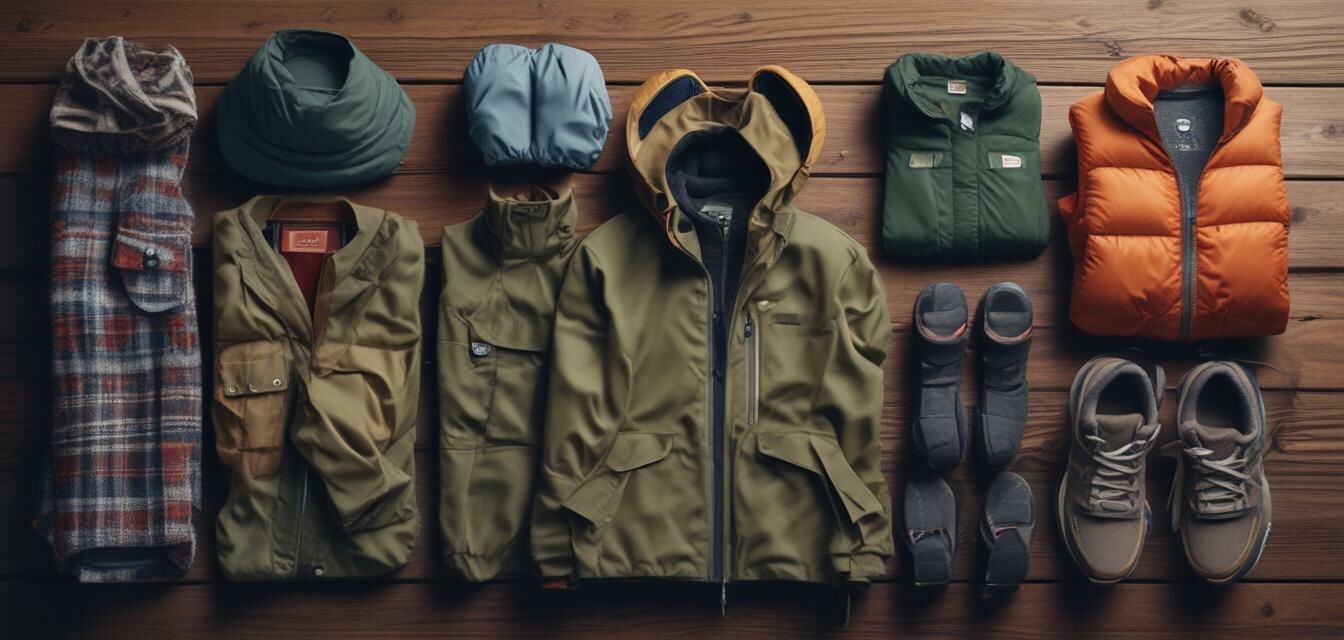
The ultimate guide to camping wardrobe essentials
Key Takeaways
- Understand the importance of layering for different climates.
- Choose moisture-wicking and quick-drying fabrics.
- Wear breathable materials for comfort in warmer weather.
- Don’t forget essential accessories like hats, gloves, and socks.
- Plan your camping wardrobe based on the length and type of your trip.
When it comes to camping, packing the right clothing is just as important as choosing the right tent or sleeping gear. Whether you're setting off for a weekend getaway or a week-long hike, understanding what to wear can make a significant difference in your comfort. This guide will help you navigate through essential clothing items and layering strategies suited for various climates, ensuring you remain comfortable throughout your trips.
Campsite climate considerations
Before you decide what to wear, it’s crucial to understand the climate of your camping destination. Different environments require different clothing strategies. Here are some common climates to consider:
| Climate Type | Description | Recommended Clothing |
|---|---|---|
| Hot and Dry | High temperatures with little humidity. | Lightweight, breathable fabrics; moisture-wicking shirts; shorts. |
| Cold and Wet | Low temperatures with rain or snow. | Insulated jackets; water-resistant layers; thermal undergarments. |
| Temperate | Mild temperatures with occasional rain. | Layered clothing; breathable jackets; comfortable pants. |
| Mountainous | Variable temperatures with strong winds. | Windbreakers; moisture-wicking base layers; durable boots. |
Understanding layering strategies
The key to staying comfortable in various climates is layering. A well-thought-out layering system can help you adapt to changing weather conditions effortlessly. Here’s the ideal layering strategy:
- Base Layer: This layer is in direct contact with your skin. Opt for materials like merino wool or synthetic fabrics that wick moisture away.
- Middle Layer: This layer provides insulation. Fleece jackets or down vests are great options for retaining warmth.
- Outer Layer: This layer protects you from wind and rain. Look for water-resistant or breathable jackets with windproof features.
Essential clothing items for your camping trip
Here’s a list of essential clothing items to consider for your camping wardrobe:
- T-shirts: Lightweight and moisture-wicking options are best.
- Long-sleeve shirts: Protect against sun and bugs.
- Hiking pants: Look for quick-dry materials.
- Shorts: Comfortable options for warmer temperatures.
- Insulated jacket: For colder nights and mornings.
- Waterproof jacket: Essential for rainy conditions.
- Underwear: Moisture-wicking options are ideal.
- Socks: Wool or synthetic fabrics designed for hiking.
- Hat: A wide-brimmed hat for sun protection.
- Gloves: Important for colder trips.
Tips for beginners
- Always check the weather forecast before your trip.
- Opt for layers that can be easily added or removed.
- Invest in good quality outdoor clothing for durability.
- Practice packing and unpacking your clothing to minimize space and weight.
- Remember to bring comfortable footwear suitable for hiking.
Planning for your trip length and activities
Depending on the length of your camping trip and the activities planned, the clothing you bring may vary. Here are some tips:
- For weekend trips: Pack versatile clothing that can be layered easily.
- For longer trips: Include extra socks and underwear, as these are essential for hygiene.
- If you're planning activities like hiking or fishing, ensure you have suitable gear to stay dry and comfortable.
Pros
- Layering keeps you prepared for changing weather.
- Investing in quality clothing enhances comfort and durability.
- Diverse clothing choices cater to various camping activities.
Cons
- Proper outdoor clothing can be expensive.
- Choosing the right gear requires knowledge of fabric types and functions.
- Overpacking can lead to unnecessary weight during hikes.
Final thoughts
Your camping wardrobe can significantly impact your comfort during outdoor adventures. By understanding the right layering strategies and picking essential clothing items, you can keep yourself prepared for whatever nature throws your way. For more information on camping gear, check out our Camping Buying Guides.
Whatever your camping plans entail, remember that knowledge is your best gear. Equip yourself with the right information, and you'll ensure that your camping trips are enjoyable and comfortable.